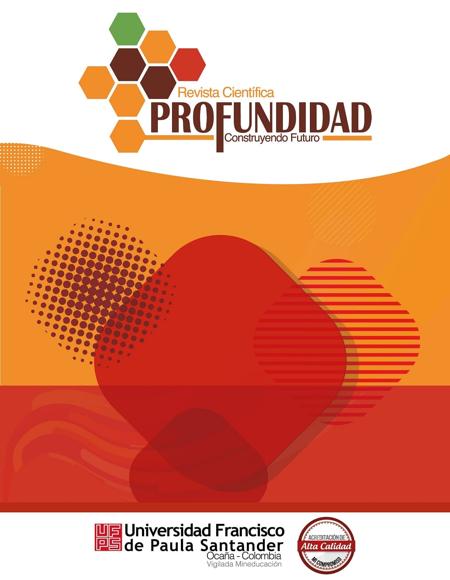The role of civil society in social transformation: the case of Ukraine
The role of civil society in social transformation: the case of Ukraine
Contenido principal del artículo
The revolutions that have taken place in Eastern Europe and the beginning of the century were a first element considered to identify the potential of social movements in the transformation of the realities of the states in different latitudes and the importance of globalization in this type of manifestations. However, the achievements of civil society in this scenario have been overshadowed by the
resurgence of conflicts. In this sense, this article studies the particular case of Ukraine and then raises how the orange revolution was a milestone in the awakening to democracy of a communist state but that the claim of civil society lacked structural elements that allowed the consolidation of an economic, political and social model adjusted to its own conditions
Descargas
Datos de publicación
Perfil evaluadores/as N/D
Declaraciones de autoría
- Sociedad académica
- Universidad Francisco de Paula Santander
- Editorial
- Universidad Francisco de Paula Santander
Detalles del artículo
Åslund, A., & McFaul, M. (Eds.). (2006). Revolution in orange: the origins of Ukraine's democratic breakthrough. Carnegie Endowment. p. 256.
Cardone, I. J. El Conflicto en Ucrania: los Intereses de las Grandes Potencias y los Perdedores de Siempre. Conjuntura Global, 3(3). DOI: https://doi.org/10.5380/cg.v3i3.39695
Cohen, S. (2005). Los Estados ante los “nuevos actores”. Ministerio Francés de Asuntos Extranjeros, 1-14.
De Piero, S. (2005). Organizaciones de la sociedad civil: tensiones de una agenda en construcción. Buenos Aires: Paidós.
Demes, P., & Forbrig, J. (2006). Pora–” It’s time” for democracy in Ukraine.Revolution in orange: The origins of Ukraine’s democratic breakthrough. Washington, DC: Carnegie Endowment for International Peace, 85-101. DOI: https://doi.org/10.2307/j.ctt1mtz6gq.10
Di Filippo, A. (1998). La visión centro-periferia hoy. Revista de la CEPAL, 50.
Diamond, L., & Plattner, M. F. (1996). El resurgimiento global de la democracia. Universidad Nacional Autónoma de México.
Fairbanks, C. H. (2007). Revolution reconsidered. Journal of Democracy, 18(1), 42-57. DOI: https://doi.org/10.1353/jod.2007.0007
Fernández, R. (2006). La energía, arma política de Putin. El País. en línea en: http://elpais.com/diario/2006/01/04/internacional/1136329208_850215.html
• Gamboa, F. (2014) A diez años de la Revolución Naranja, la historia se repite como tragedia. Nueva crónica y buen gobierno. Número 140. Disponible en línea en: http://www.nuevacronica.com/mundo/a-diez-anos-de-la-revolucion-naranja-la-historia-se-repite-como-tragedia/
Gamboa, F. (2014). El conflicto en Ucrania: A diez años del fracaso de la Revolución Naranja. Ciências Sociais Unisinos, 50(1), 97-100. DOI: https://doi.org/10.4013/csu.2014.50.1.11
Goldstein, J. (2007). The role of digital networked technologies in the Ukrainian Orange Revolution. Berkman Center Research Publication, (2007-14). DOI: https://doi.org/10.2139/ssrn.1077686
Goncharova, G., MONTANER, A., & RYZHYKOV, Y. V. (2014). La cuestión ucraniana: lo que Europa se niega a saber. El Cronista del Estado Social y Democrático de Derecho, (45), 4-31.
Gordon, P. y Chollet, D. (2005). Don´t let the Rose Revolution wilt. en YaleGlobal Online Sitio web: http://www.brookings.edu/research/opinions/2005/08/18asia-gordon
Laverty, N. (2008). The problem of lasting change. Demokratizatsiya, 16, 143-162. DOI: https://doi.org/10.3200/DEMO.16.2.143-162
Mancera, A. C. (2014). La federación rusa y la crisis de Ucrania. Cotidiano - Revista de La Realidad Mexicana, 29(186), 89-96.
Marín Aranguren, E.M. (2010). La sociedad civil global en la gobernanza ambiental del sector agua en el mundo. OASIS, 15, 53-73
Markoff, J. (1999). Olas de democracia: movimientos sociales y cambio politico. Tecnos.p. 15, 49, 51.
Márquez Muñoz, J. ¿ Ucrania dividida?. Revista de Relaciones Internacionales de la UNAM, (96).
McAdam, D., McCarthy, J. D., & Zald, M. N. (1999). Movimientos sociales, perspectivas comparadas: oportunidades políticas, estructuras de movilización y marcos interpretativos culturales (Vol. 154). Ediciones AKAL. p. 215.
Morgan M. (2004). Analysis: Ukraine's youths rise up. BBC News. Disponible en línea en http://news.bbc.co.uk/2/hi/europe/4122485.stm.
Offe, C. (1992). Los nuevos movimientos sociales cuestionan los límites de la política institucional. Partidos políticos y nuevos movimientos sociales, 163-239.
Oñativia, O., & Contemporáneos, G. D. E. I. (2014). Ucrania: La Bisagra entre Occidente y Oriente.
Plo, R., & Antonio, R. (2004). Europa y Rusia ante la crisis ucraniana. Boletín Elcano, (57), 5.
Priego, A. (2014) Ucrania: la Revolución Naranja se tiñe de rojo. Real Instituto el Cano. Disponible en línea en: http://www.blog.rielcano.org/ucrania-la-revolucion-naranja-se-tine-de-rojo/
Rodríguez, A. (2011). Las Revoluciones de Colores: una descripción de las estrategias de acción implementadas por los movimientos sociales exitosos. Revista española de ciencia política, (26), 127-148.
Solana, J. (1997) El presente y el futuro de la OTAN. Escuela Militar de Zaragoza. OTAN. En línea en: http://www.nato.int/docu/speech/1997/s970602a.htm
Tarrow, S. (1999). Estado y oportunidades: la estructuración política de los movimientos sociales. En Movimientos sociales, perspectivas comparadas: oportunidades políticas, estructuras de movilización y marcos interpretativos culturales (pp. 71-99). Ediciones Istmo.
Wilson, A. (2005) Ukraine´s orange revolution. New Haven and London: Yale. University Press, 256 p
Zarembo, K. (2011). 20 años de independencia de Ucrania, Moldova y Bielarús:¿ Es tiempo suficiente para construir un Estado democrático? Revista CIDOB d'afers internacionals, 133-144.
Zubelzú, G (2007) Sistemas políticos, revoluciones de colores y perspectivas. Los casos de Georgia, Ucrania y Kirguisztán” Consejo Argentino para las Relaciones Internacionales. 57 p.











